

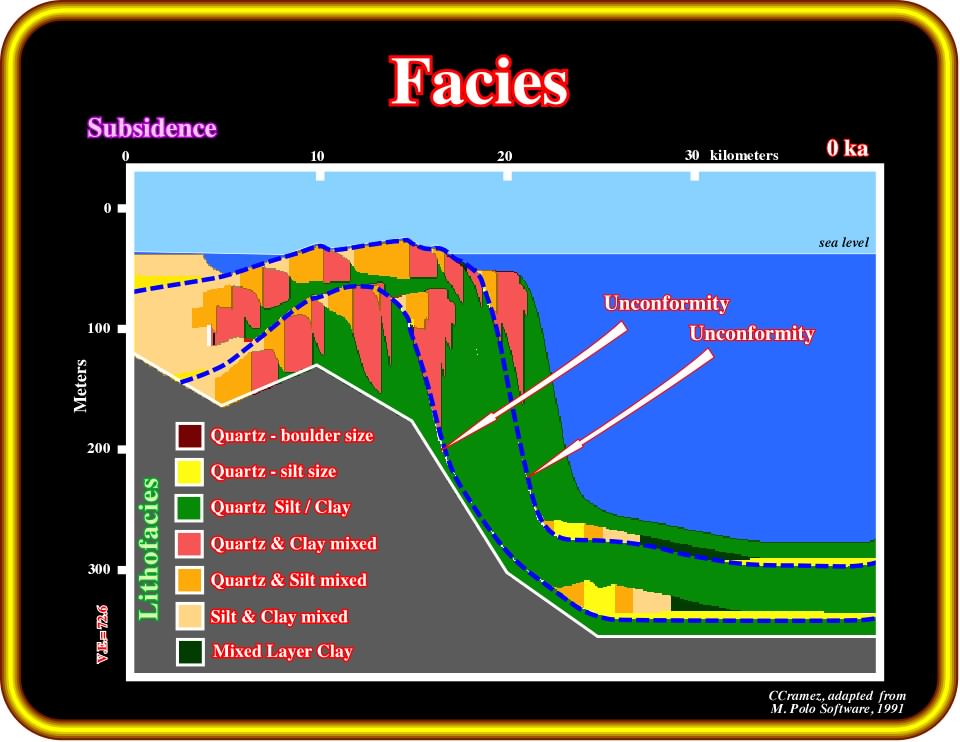
Plate 341 - The sequential stratigraphy and depositional systems, illustrated in Plates 339 and 340, suggest the lithology shown above. The potential sandstone reservoir-rocks are strongly associated with the unconformities, either by onlap or toplaping. In fact, one of the advantages of sequential stratigraphy, which is based on unconformity picking, is reservoir prediction. Genetic stratigraphy (based on the mapping of downlap surfaces) favors the identification of potential marine source rocks.
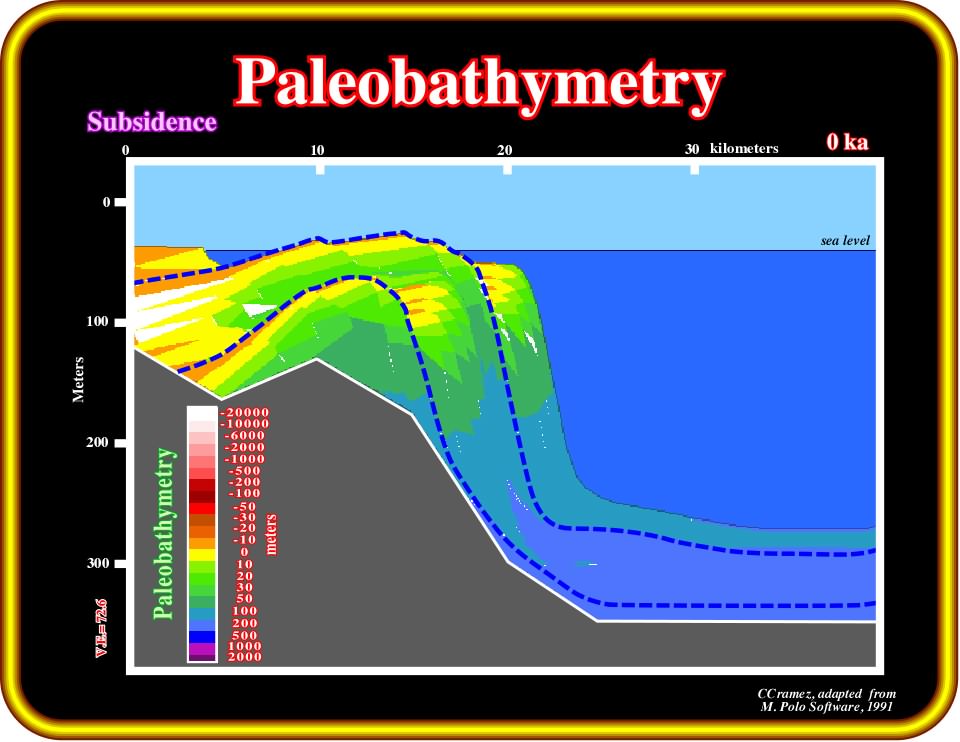
Plate 342 - This figure illustrates the paleowater depth of the sedimentological model illustrated in Plate 338, in which the subsidence parameters were changed in relation to the initial model (Plate 325 and Plate 328).
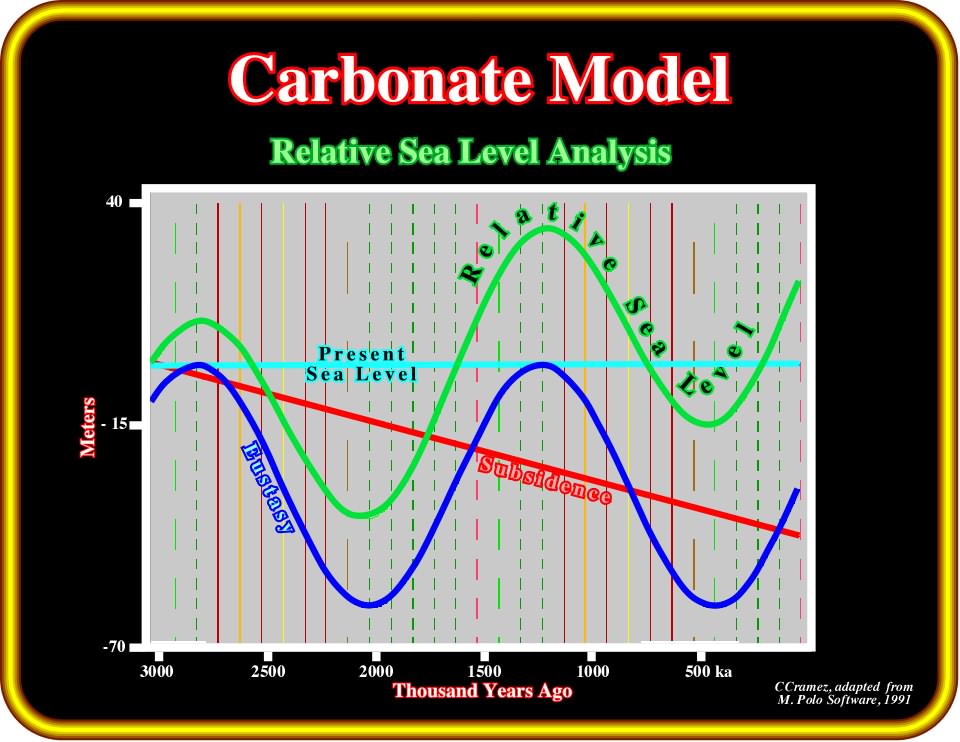
Plate 343 - The same subsidence and eustasy, i.e., the same relative sea level changes as those used in the sand-shale mathematical model, were used in the mathematical carbonate model that will be shown in the next plates. Only the terrigeneous influx was replaced by a carbonate function illustrated in Plate 344.

Plate 344 - This carbonate function was used in the carbonate model. In relation to the sand-shale mode, only this parameter replaced the terrigeneous influx. All other parameters are the same. In this carbonate function, the maximum of productivity is under a 3-10 m of water depth. Algal production stops at 35 - 40 meters, while reef production becomes meaningless below 60 -70 m of water depth.
2.1) - Chronostratigraphic Lines
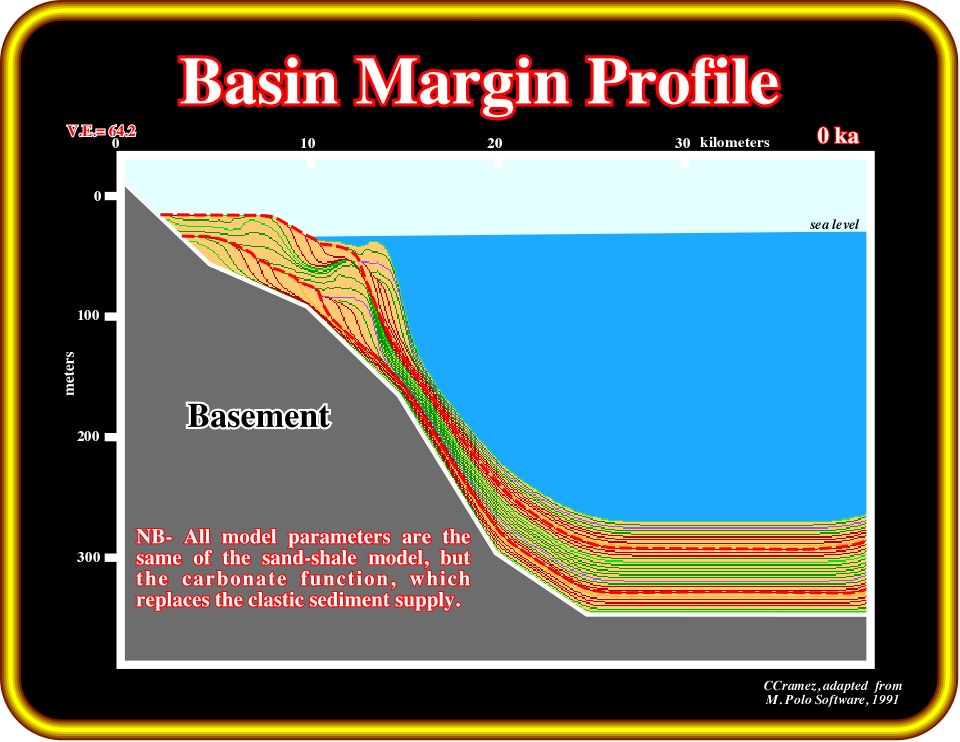
Plate 345- The model response, when the terrigeneous influx is replaced by a carbonate function, is quite different from the sand-shale response. Reef buildups develop near the shelf break. On the contrary, in deep water, the geometry of the chronostratigraphic is here more or less parallel (pelagic limestones).
2.2) - Chronostratigraphy
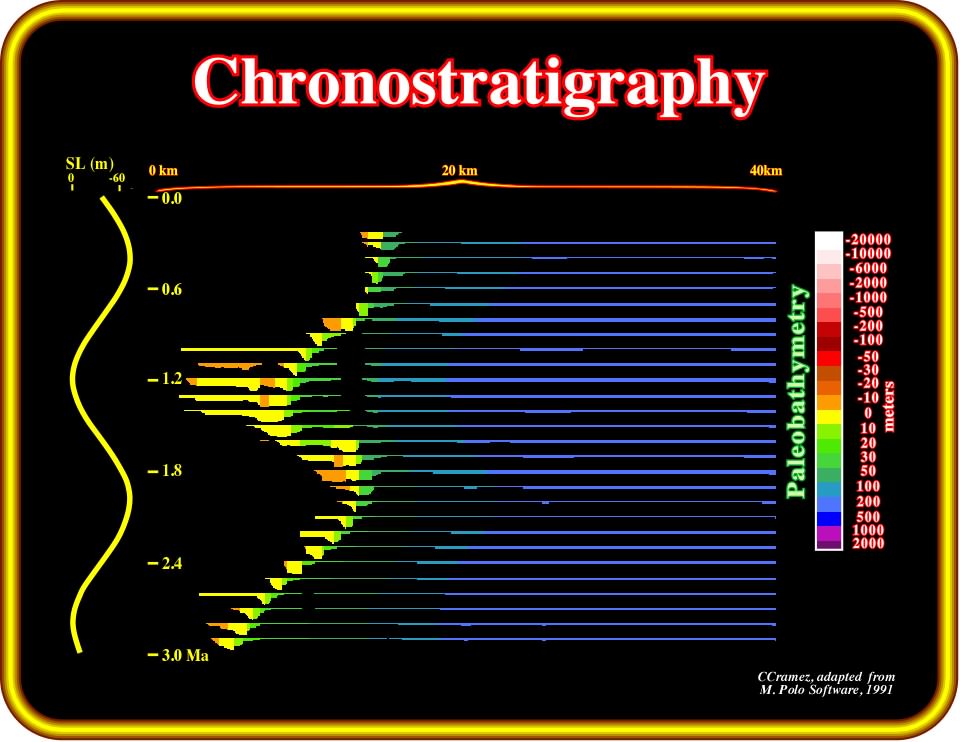
Plate 346- The chronostratigraphy is also quite different from that of the sand-shale model. Downlap surfaces are much common and there is no bypass zone. In deep-water environments, there are no onlap surfaces, since, generally, there are no slope or basin floor fans.
2.3) - Systems Tracts
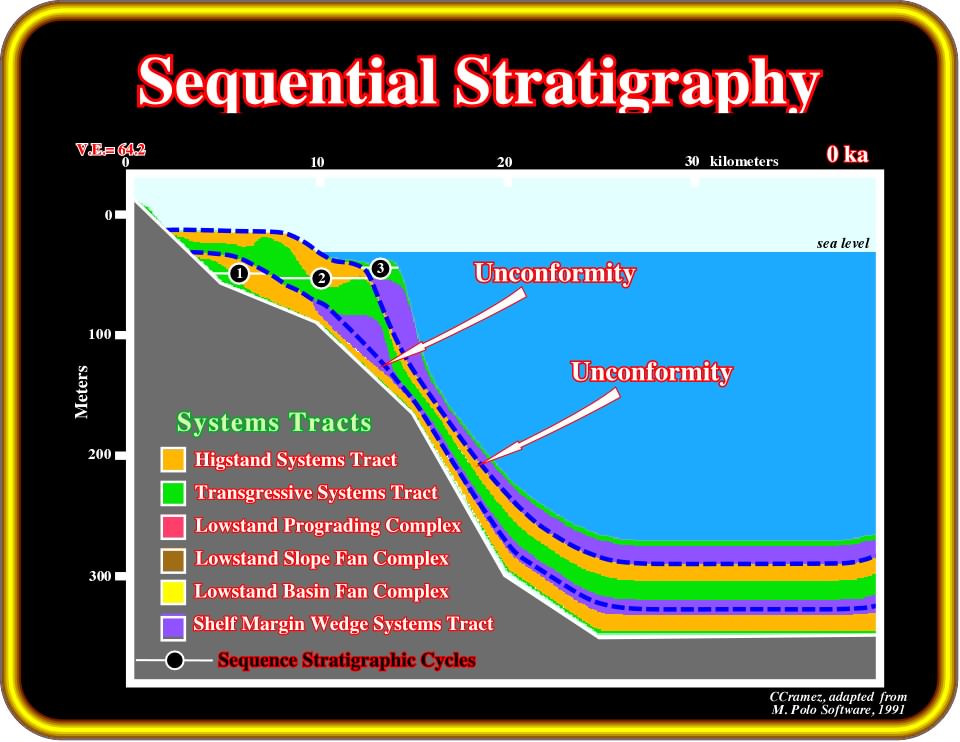
Plate 347 - The sequential stratigraphy of the carbonate model strongly suggests that the lowstand systems tracts (LPW, SF and BFF) are absent. On the contrary, the shelf margins wedge (SMW) is more developed than in the sand-shale model, as well as the transgressive systems tracts (TST).
2.4) - Carbonate Depositional Systems
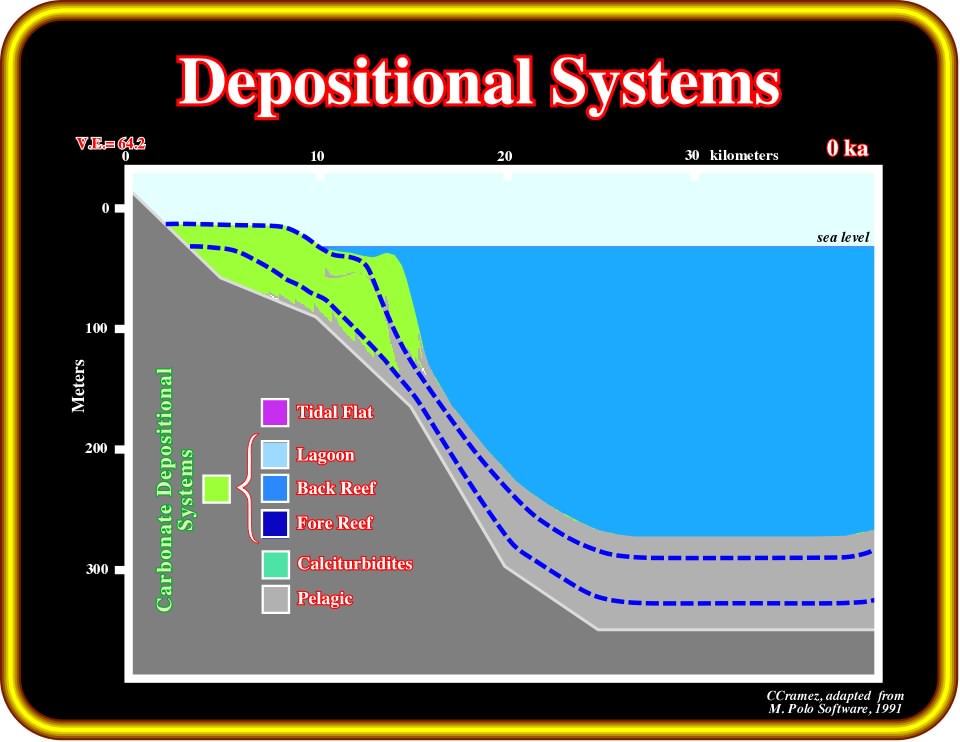
Plate 348- In a carbonate model, the prediction of depositional environments is much more difficult than in the sand-shale model. We prefer to give just a rough idea of the limit between the pelagic sediments and the carbonate depositional systems, knowing that in such a term we include (i) lagoon, (ii) back reef and (iii) fore reef. The software does not work so well as in the sand-shale model.
2.5) - Facies
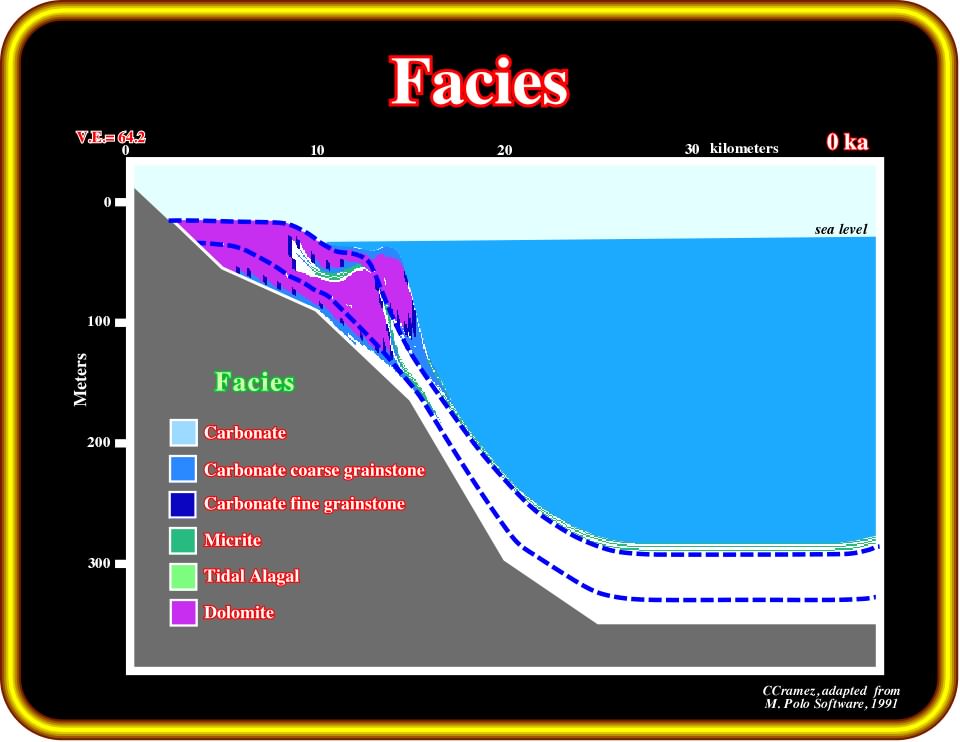
Plate 349- As for the depositional environments (Plate 348), facies prediction is also very speculative. The results of the model have been refuted several times. In a carbonate model, sequential stratigraphy, and particular environment and facies prediction, does not work as well as in a sand-shale model.
2.6) - Paleobathymetry
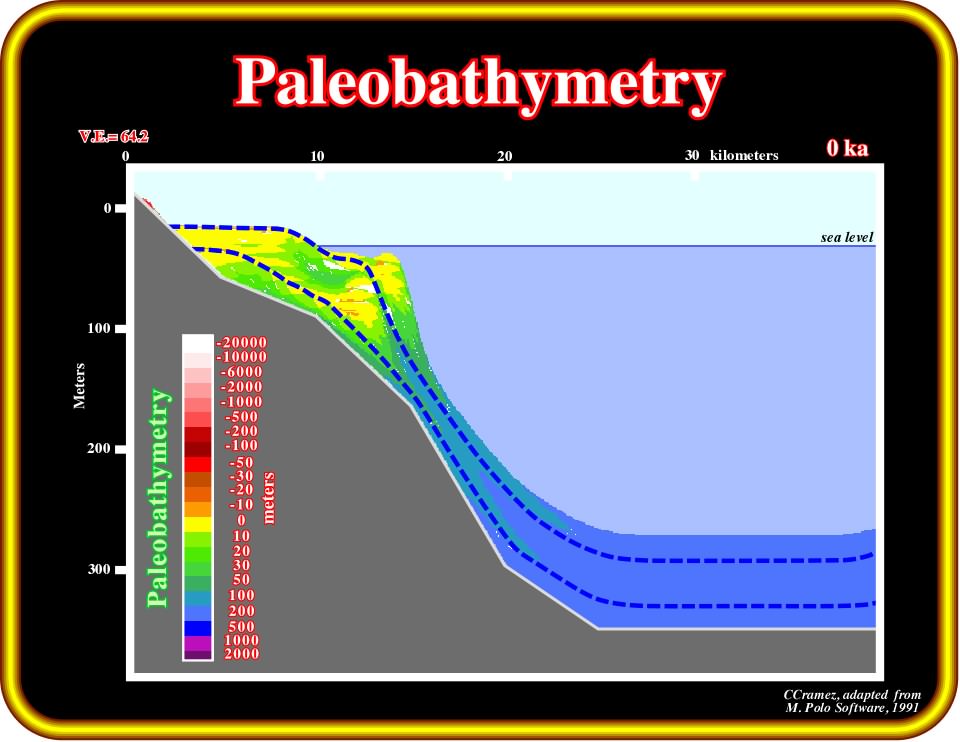
Plate 350 - Using the geometry of the chronostratigraphic lines and the sequential stratigraphy, the above paleobathymetry can be predicted. It strongly depends on the carbonate function used in the model.